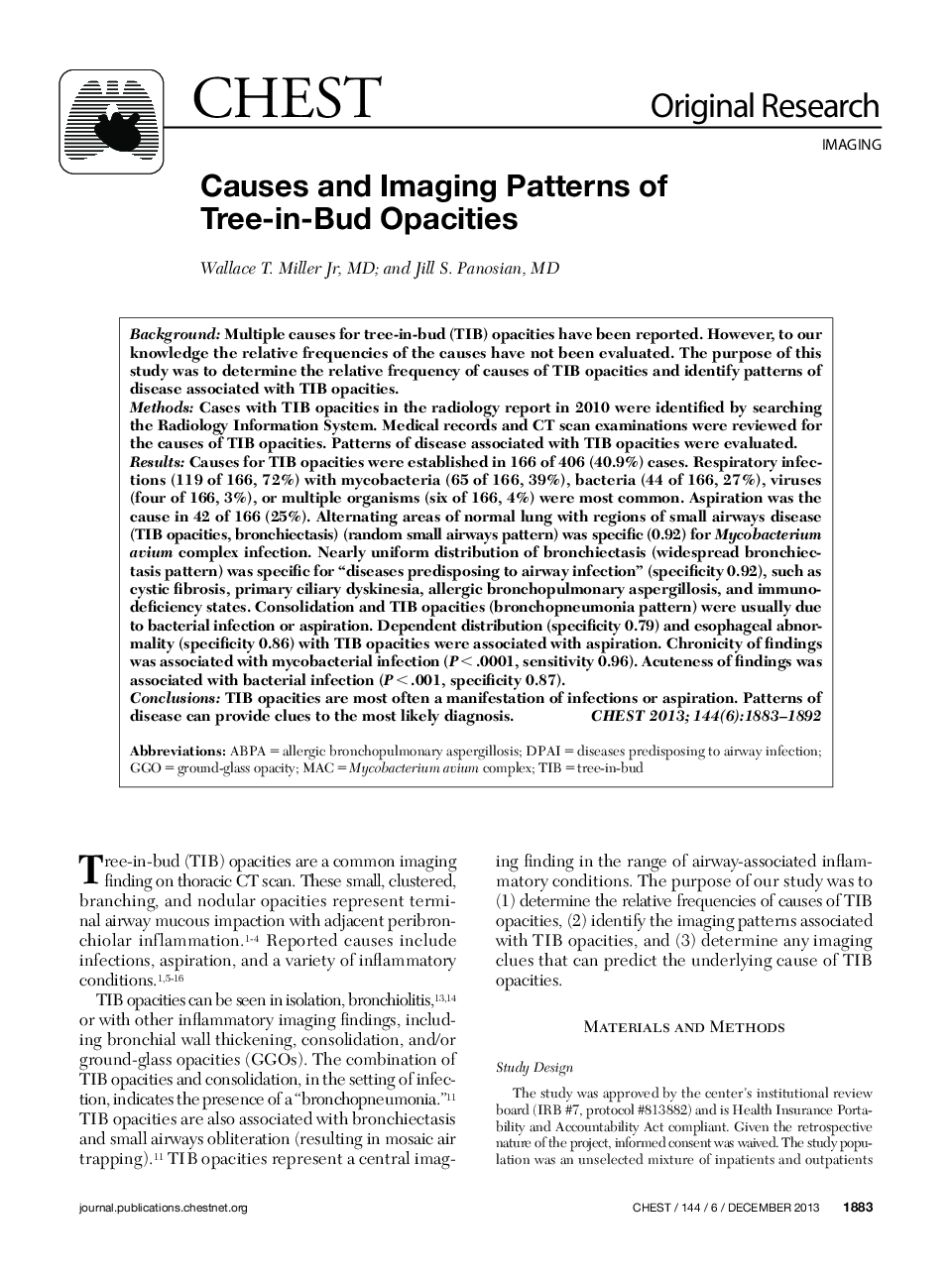| Article ID | Journal | Published Year | Pages | File Type |
|---|---|---|---|---|
| 2900298 | Chest | 2013 | 10 Pages |
BackgroundMultiple causes for tree-in-bud (TIB) opacities have been reported. However, to our knowledge the relative frequencies of the causes have not been evaluated. The purpose of this study was to determine the relative frequency of causes of TIB opacities and identify patterns of disease associated with TIB opacities.MethodsCases with TIB opacities in the radiology report in 2010 were identified by searching the Radiology Information System. Medical records and CT scan examinations were reviewed for the causes of TIB opacities. Patterns of disease associated with TIB opacities were evaluated.ResultsCauses for TIB opacities were established in 166 of 406 (40.9%) cases. Respiratory infections (119 of 166, 72%) with mycobacteria (65 of 166, 39%), bacteria (44 of 166, 27%), viruses (four of 166, 3%), or multiple organisms (six of 166, 4%) were most common. Aspiration was the cause in 42 of 166 (25%). Alternating areas of normal lung with regions of small airways disease (TIB opacities, bronchiectasis) (random small airways pattern) was specific (0.92) for Mycobacterium avium complex infection. Nearly uniform distribution of bronchiectasis (widespread bronchiectasis pattern) was specific for “diseases predisposing to airway infection” (specificity 0.92), such as cystic fibrosis, primary ciliary dyskinesia, allergic bronchopulmonary aspergillosis, and immunodeficiency states. Consolidation and TIB opacities (bronchopneumonia pattern) were usually due to bacterial infection or aspiration. Dependent distribution (specificity 0.79) and esophageal abnormality (specificity 0.86) with TIB opacities were associated with aspiration. Chronicity of findings was associated with mycobacterial infection (P < .0001, sensitivity 0.96). Acuteness of findings was associated with bacterial infection (P < .001, specificity 0.87).ConclusionsTIB opacities are most often a manifestation of infections or aspiration. Patterns of disease can provide clues to the most likely diagnosis.
